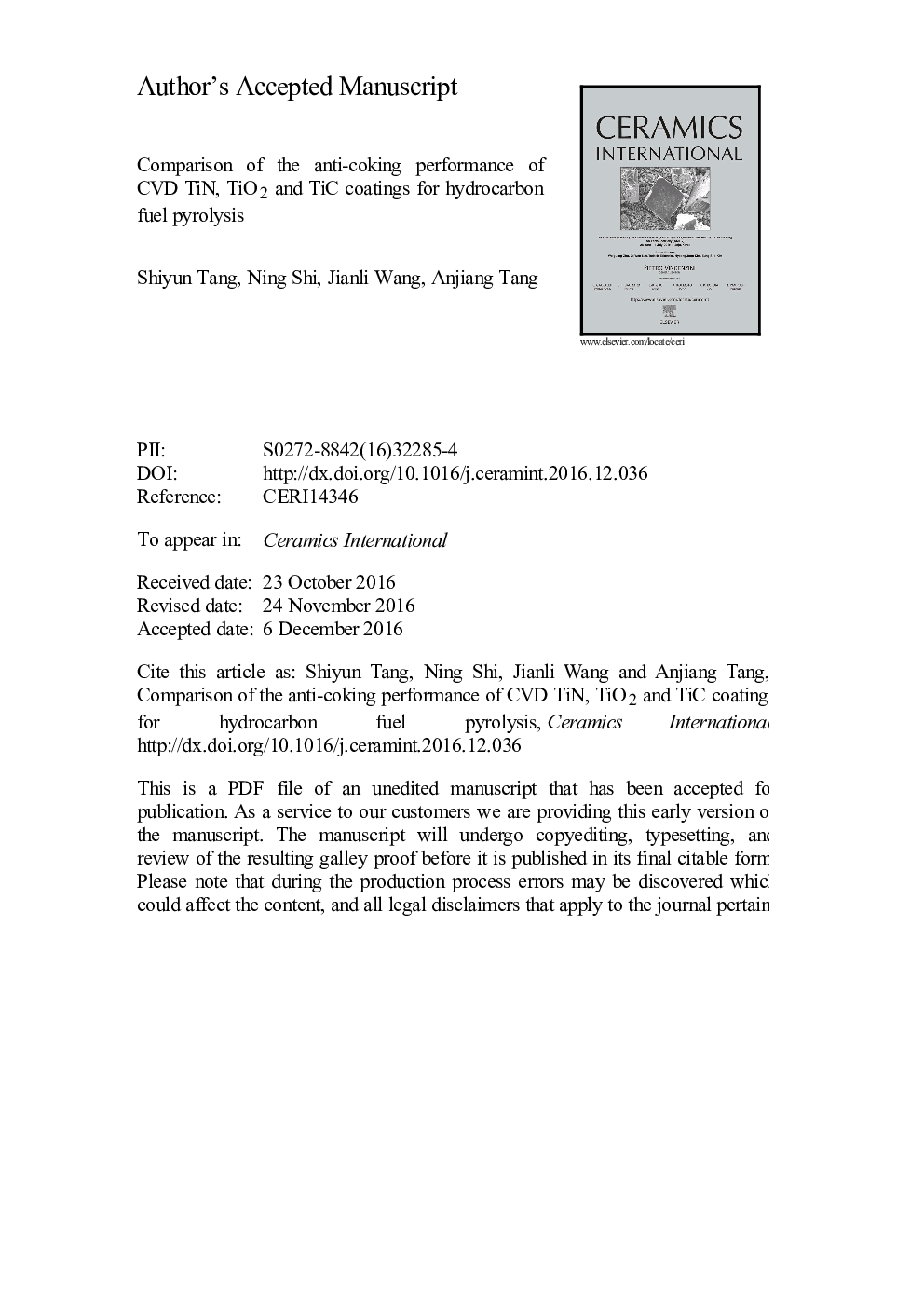| کد مقاله | کد نشریه | سال انتشار | مقاله انگلیسی | نسخه تمام متن |
|---|---|---|---|---|
| 5438938 | 1398189 | 2017 | 22 صفحه PDF | دانلود رایگان |
عنوان انگلیسی مقاله ISI
Comparison of the anti-coking performance of CVD TiN, TiO2 and TiC coatings for hydrocarbon fuel pyrolysis
دانلود مقاله + سفارش ترجمه
دانلود مقاله ISI انگلیسی
رایگان برای ایرانیان
موضوعات مرتبط
مهندسی و علوم پایه
مهندسی مواد
سرامیک و کامپوزیت
پیش نمایش صفحه اول مقاله

چکیده انگلیسی
Previous work has shown that both TiN and TiO2 coatings can inhibit the metallic catalytic coking effectively, but both of them have their own shortage. In this work, TiC coating was prepared on the surface of SS304 tube using TiCl4-CH4-H2 by CVD method. Its morphology, elemental composition, thickness and oxidation resistance were characterized by SEM, EDX, metalloscopy and TPO tests, respectively. The results show that CVD TiC coating is gray, homogeneous, and dense without cracks or holes. The TiC coating presents a cuboid particle structure with the sizes of about 1.0 µm for the cuboid crystals, and the Ti/C ratio close to 1:1, while the average thickness is about 11.62 µm. TPO results show that the TiC coating begins to react with O2 and release CO2 at about 810 °C. Compared with the TiN coating (The initial oxidation temperature of TiN is about 350 °C), the oxidation resistance of TiC coating is improved substantially. As a conclusion, the high oxidation resistance order is TiO2 coating>TiC coating>TiN coating. Furthermore, the temperature programmed cracking of RP-3 Chinese jet fuel was employed to compare the anti-coking performance of TiN, TiO2 and TiC coatings. The results show that each of TiN, TiO2 and TiC coating has obvious anti-coking effect, and the anti-coking performance order is TiN coating=TiC coating>TiO2 coating.
ناشر
Database: Elsevier - ScienceDirect (ساینس دایرکت)
Journal: Ceramics International - Volume 43, Issue 4, March 2017, Pages 3818-3823
Journal: Ceramics International - Volume 43, Issue 4, March 2017, Pages 3818-3823
نویسندگان
Shiyun Tang, Ning Shi, Jianli Wang, Anjiang Tang,